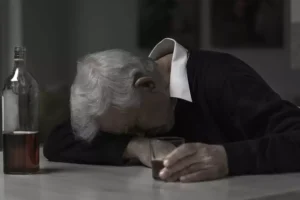
Overall, the Identifying Triggers worksheet is a versatile tool that can be used by anyone who wants to understand their emotions, behavior patterns better, and relationships with others. Whether you are struggling with emotional issues or want to improve your self-awareness and communication skills, this worksheet can help you achieve your goals. It’s essential to be honest with yourself when describing your reaction, as this can help you identify the coping strategies that will work best for you. A therapist can help you identify and cope with your PTSD triggers in a safe and supportive setting. Although it is important to increase your awareness of your triggers, doing so can cause some distress.

What is Relapse?
There are two main types of triggers that can start someone towards the path of relapse. Often, relapse will be preceded by a trigger that causes someone to start thinking about relapsing or creates a craving for a substance that was previously used. These triggers can be difficult to recognize and can completely disrupt a recovery if they lead to relapse. Recognition and avoidance of potential triggers will be a key part of any recovery process.
Cope with triggers you can’t avoid.
- Recognition and avoidance of potential triggers will be a key part of any recovery process.
- A post-traumatic stress disorder (PTSD) trigger can include any sound, sight, smell, thought, or another reminder of a traumatic event.
- Everyone will have different internal triggers, but by recognizing some of the common ones you will be better equipped to avoid or address your internal triggers.
Yes, the Identifying Triggers Worksheet can be used for mental health concerns such as anxiety or recovery. The worksheet focuses on CBT methods to help individuals overcome their negative challenges. For those https://ecosoberhouse.com/ struggling with substance abuse and addiction, it isn’t uncommon for the affected person to return to alcohol or drug use. About 40-60% of those struggling with addiction relapse following treatment.
Have a Safety Plan in Place
- Any of these triggers may promote or encourage particular negative feelings or emotions.
- Having a plan to get through times when your cravings are triggered will be very helpful in avoiding a relapse.
- The worksheet encourages you to reflect on your emotions and behavior patterns, helping you better understand yourself.
- If you are concerned about thoughts of suicide or if you feel you are in immediate need of help, dial 988 to reach the suicide prevention hotline.
If you choose to try it on your own and at any point feel you need more help, then seek support (see Help Links). The discussion of triggers is a standard part of most substance use treatments. We recommend this worksheet as the basis for a group discussion about triggers. If you are starting to consider relapse, you may find that you are exposing yourself to possible triggers, even subconsciously. If you find yourself in high risk situations that could trigger a relapse, you should immediately reach out to someone that you can trust and who is supportive of your recovery. Talking through the trigger and enlisting someone else’s help can provide you with the motivation and assistance needed to overcome the trigger and stay sober.
Handling Urges to Drink
It should not be used in place of the advice of your physician or other qualified healthcare providers. It is an excellent resource for individuals who struggle with anxiety, stress, or other emotional issues and need a tool to help them identify the triggers that cause these emotions. Mental health practitioners, such as therapists, counselors, and social workers, can also use this worksheet to help clients understand and manage their emotional triggers.
Identifying Your Triggers
The Identifying Triggers Worksheet can be used in various settings, including therapy sessions, support groups, or self-help sessions. You can download the worksheet for free from multiple websites, including Carepatron. Once you have downloaded the worksheet, you can print it out and fill it in by hand or type your answers directly onto the document using a computer or tablet. Using the worksheet regularly can help you to become more self-aware and, in turn, improve your emotional intelligence. By Matthew Tull, PhDMatthew Tull, PhD is a professor of psychology at the University of Toledo, specializing in post-traumatic stress disorder.
Types of Addiction Relapse Triggers

Some people might become triggered by trying to identify their triggers. Therefore, before you take steps to identify your triggers, ensure you have a safety plan in place in case you experience some distress. Consider tracking and analyzing your urges to drink for a couple of weeks. This will help you become internal vs external triggers more aware of when and how you experience urges, what triggers them, and ways to avoid or control them. The following activity offers suggestions to support you in your decision to cut back or quit drinking. It can be used with counseling or therapy and is not meant as a substitute for professional help.


After identifying triggers, your clients will be prompted to develop strategies to either avoid or cope with their triggers. This worksheet was intentionally designed to be used with several different treatment problems, such as anger, substance use, or relationships. If you’re unsure of what triggers to include in the CBT worksheet, perhaps it is worth consulting this list. Here, we have collated some of the top 10 most common triggers for general mental health that may need working on. Any of these triggers may promote or encourage particular negative feelings or emotions.
Practice Management, EHR/EMR and Teletherapy Platform


Leave a Reply